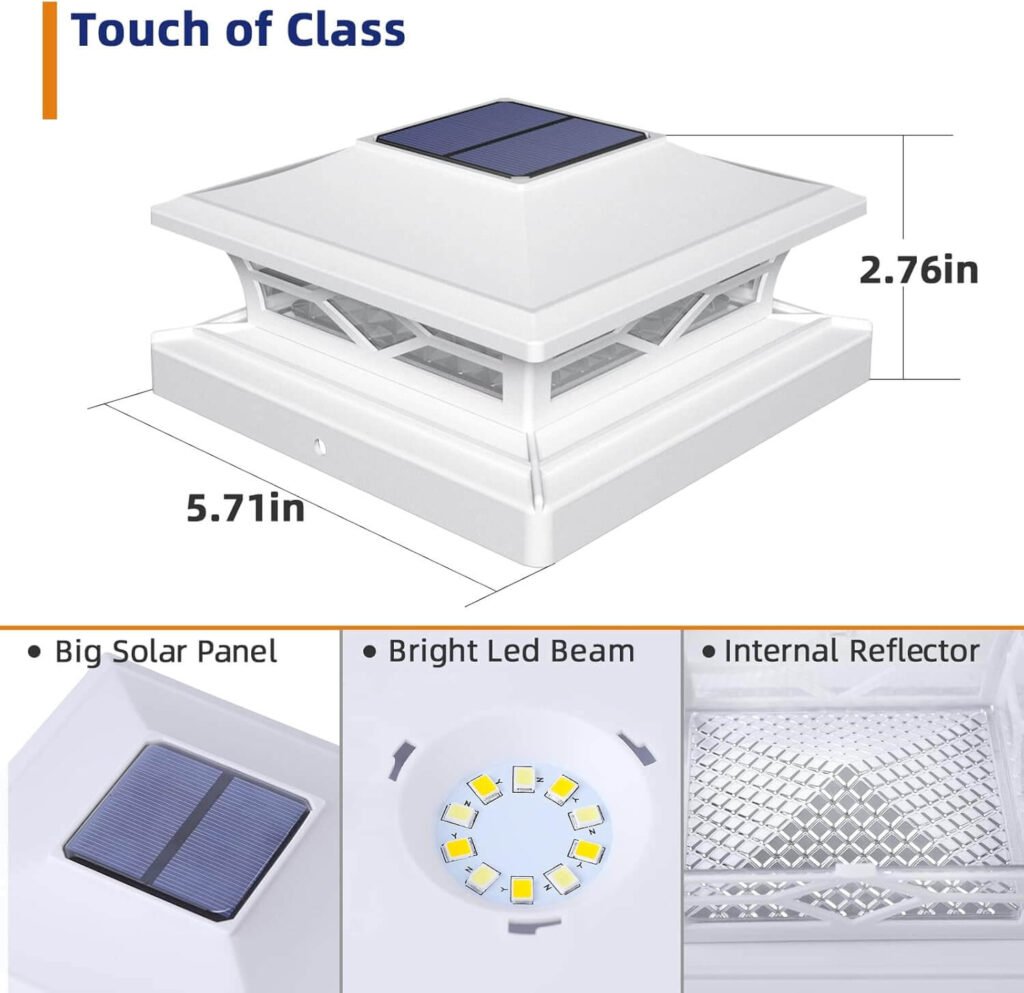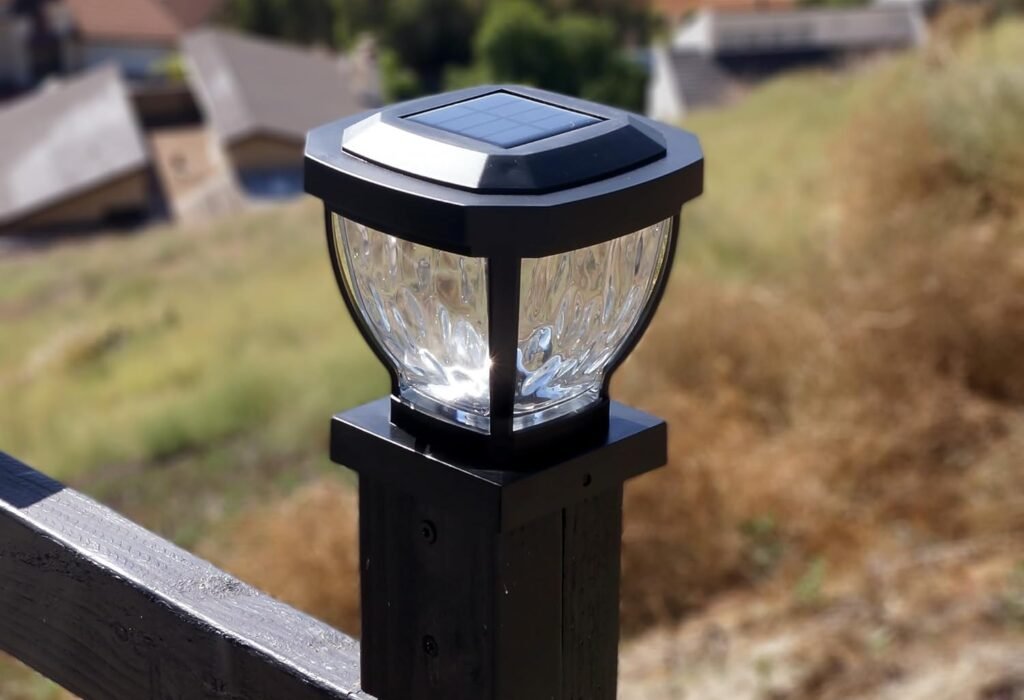
How Does a Solar Lighting System Work?
They use their solar panel to harness the sun’s energy to provide illumination without relying on traditional electrical power.
Solar lighting systems are an energy-efficient and eco-friendly way to power our indoor and outdoor lights.
Am going to break down how this solar lighting system works just like I did in these other articles
Also breaking down the components, processes, and benefits of this lighting system.
The Basics of a Solar Lighting System
A solar lighting system operates by converting sunlight into electricity during the day and storing excess energy to be used to power lights at night.
This process is automated and requires little to no intervention from the owner.
Key Steps in the Process:
- Sunlight Absorption: Solar panels collect sunlight and convert it into electricity.
- Energy Conversion: Photovoltaic (PV) cells within the solar panel transform sunlight into direct current (DC) electricity.
- Energy Storage: A rechargeable battery stores the generated electricity for later use.
- Automatic Activation: A light sensor detects when it gets dark and activates the lighting system.
- Illumination: The stored energy powers LED lights, providing illumination until the battery is depleted or sunlight returns.

Components of a Solar Lighting System
1. Solar Panel
- Purpose: Captures sunlight and converts it into electricity.
- Types of Panels:
- Monocrystalline: High efficiency, compact size.
- Polycrystalline: Cost-effective with slightly lower efficiency.
- Placement: Positioned for maximum sun exposure, often at an angle or mounted on poles.
2. Rechargeable Battery
- Purpose: Stores the electricity generated by the solar panel.
- Common Types:
- Lithium-ion Batteries: Long lifespan, lightweight, and efficient.
- Nickel-Metal Hydride (NiMH): Affordable and reliable.
- Key Role: Provides power to the lights during nighttime or cloudy days.
3. Charge Controller
- Purpose: Regulates the flow of electricity to and from the battery.
- Functions:
- Prevents overcharging or deep discharging of the battery.
- Extends battery life and ensures efficient energy use.
4. LED Light
- Purpose: Provides illumination.
- Features:
- Energy-efficient and durable.
- Available in various brightness levels, measured in lumens.
- Lifespan: Typically lasts up to 50,000 hours.
5. Light Sensor
- Purpose: Detects ambient light levels and triggers the system to turn on or off automatically.
- Benefit: Ensures the lights operate only when needed, saving energy.
6. Casing and Support Structure
- Purpose: Protects internal components from weather and physical damage.
- Design: Weatherproof, durable, and aesthetically pleasing.
How Does a Solar Lighting System Work? Step-by-Step Guide.
Daytime Charging:
- Solar panels absorb sunlight and generate DC electricity.
- This energy is stored in the rechargeable battery for later use.
Energy Regulation:
- The charge controller ensures the battery is charged optimally and prevents overcharging.
Nighttime Activation:
- As daylight fades, the light sensor detects the drop in ambient light levels.
- The system automatically switches on the LED lights.
Nighttime Illumination:
- The stored energy powers the lights, providing consistent illumination throughout the night.
Repeat Cycle:
- At sunrise, the light sensor turns off the LEDs, and the solar panels begin recharging the battery.
Advantages of Solar Lighting Systems
1. Environmentally Friendly
- Uses renewable solar energy, reducing greenhouse gas emissions.
- Does not rely on fossil fuels or contribute to air pollution.
2. Cost-Effective
- Eliminates electricity bills for lighting.
- Minimal maintenance and a long lifespan lower overall costs.
3. Easy Installation
- No wiring or external power source is required.
- Portable and ideal for remote areas or temporary setups.
4. Automated Operation
- Light sensors ensure hassle-free, automatic on/off functionality.
5. Versatile Applications
- Suitable for outdoor gardens, pathways, street lighting, and even indoor use in off-grid locations.

Factors Affecting Solar Lighting System Performance
1. Sunlight Availability
- Direct Sunlight: Ensures optimal charging.
- Shaded Areas: Can reduce charging efficiency and illumination duration.
2. Weather Conditions
- Cloudy, rainy, or snowy days may affect energy generation.
- Regular cleaning of solar panels ensures better performance.
3. Battery Capacity
- Larger batteries store more energy and support longer illumination times.
4. Placement of Solar Panels
- Proper orientation and tilt maximize sunlight absorption.
Common Questions About Solar Lighting Systems
1. How long do solar lights last?
- Solar lights typically last 8-10 hours per night after a full day of charging.
- The lifespan of the components:
- Batteries: 1-3 years (replaceable).
- LEDs: 50,000+ hours.
- Solar Panels: 20-25 years.
2. Can solar lights work during cloudy days?
Yes, solar panels can still generate electricity from diffused sunlight, although charging efficiency is reduced.
3. Are solar lighting systems waterproof?
Most solar lighting systems are designed to be weather-resistant, making them suitable for outdoor use in rain or snow.
4. How do I maintain a solar lighting system?
- Clean the solar panels regularly to remove dirt and debris.
- Inspect the battery and replace it when necessary.
5. Are solar lighting systems cost-effective?
Yes, while the initial investment may be higher than traditional lights, solar systems save on electricity costs and require minimal maintenance.
Conclusion
Solar lighting systems are smart, sustainable, and economical way to light up your spaces.
They uses solar energy gotten from the sun to provide reliable illumination, reduce electricity bills, and lower your carbon footprint.
Whether you’re lighting a garden, a pathway, or a remote off-grid area, solar lighting systems offer an effective and environmentally friendly solution.
Make the switch to solar lighting today and enjoy the benefits of a brighter, greener future with you your family, and your friends.



